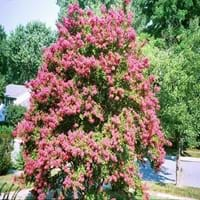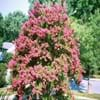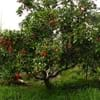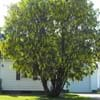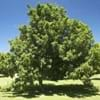Life Span
Perennial
Perennial
Type
Tree
Bulb or Corm or Tuber
Origin
Hybrid origin
South America, Argentina
Types
Lagerstroemia villosa, Lagerstroemia subcostata, Lagerstroemia microcarpa
Not Available
Habitat
Coastal Regions, Open Forest, Swamps
Temperate Regions
USDA Hardiness Zone
6-10
5-9
Sunset Zone
H1, H2, 7, 8, 9, 10, 12, 13, 14, 18, 19, 20, 21
21,22
Habit
Upright/Erect
Clump-Forming
Flower Color
Red
Light Blue, Light Purple, Silver, Sky Blue
Flower Color Modifier
Bicolor
Bicolor
Fruit Color
Green, Brown
Not Available
Leaf Color in Spring
Dark Green, Burgundy
Green, Light Green, Gray Green
Leaf Color in Summer
Dark Green, Burgundy
Light Green
Leaf Color in Fall
Burgundy, Dark Red
Several shades of Green
Leaf Color in Winter
Not Available
Light Green
Leaf Shape
Cylindrical
Grass like
Plant Season
Spring, Summer, Fall, Winter
Spring
Sunlight
Full Sun, Partial Sun
Full Sun, Partial Sun, Partial shade
Growth Rate
Medium
Medium
Type of Soil
Clay, Loam
Clay, Loam, Sand
The pH of Soil
Acidic, Neutral
Acidic, Neutral, Alkaline
Soil Drainage
Well drained
Well drained
Bloom Time
Summer, Late Summer
Early Spring, Spring, Late Winter
Tolerances
Drought, Soil Compaction
Drought
Where to Plant?
Ground
Container, Ground
How to Plant?
From bulbs, Seedlings, Seperation, Stem Planting
By dividing rhizomes, tubers
Plant Maintenance
Medium
Medium
Watering Requirements
Needs watering once a week, Requires watering in the growing season
Average Water Needs, Do Not over Water, Requires regular watering
In Summer
Lots of watering
Lots of watering
In Spring
Moderate
Moderate
In Winter
Average Water
Average Water
Soil pH
Acidic, Neutral
Acidic, Neutral, Alkaline
Soil Type
Clay, Loam
Clay, Loam, Sand
Soil Drainage Capacity
Well drained
Well drained
Sun Exposure
Full Sun, Partial Sun
Full Sun, Partial Sun, Partial shade
Pruning
Prune if you want to improve plant shape, Prune to stimulate growth, Remove damaged leaves, Remove dead branches, Remove dead leaves
Remove damaged leaves, Remove dead branches, Remove dead leaves
Fertilizers
fertilize every 2-3 weeks while growing, fertilize in growing season, Requires high amount of nitrogen
All-Purpose Liquid Fertilizer
Pests and Diseases
Beetles, Insects, Powdery mildew, Red blotch
Slugs, Snails
Plant Tolerance
Drought
Drought
Flower Petal Number
Single
Single
Foliage Texture
Medium
Medium
Foliage Sheen
Glossy
Matte
Attracts
Birds
Bees, Birds, Hummingbirds
Allergy
allergic reaction, Asthma
Not Available
Aesthetic Uses
Beautification, Cottage Garden, Landscape Designing, Showy Purposes
Showy Purposes
Beauty Benefits
Not Available
Not Available
Environmental Uses
Air purification, Food for birds, Food for insects, Nesting sites for birds, Prevent Soil Erosion, Shadow Tree
Air purification
Medicinal Uses
No Medicinal Use
No Medicinal Use
Part of Plant Used
Flowers, Stem, Tree trunks
Flowers
Other Uses
Decoration Purposes, Economic Purpose, Showy Purposes, Used as Ornamental plant, Used for woodware, Used in construction, Used in Furniture
Not Available
Used As Indoor Plant
No
Yes
Used As Outdoor Plant
Yes
Yes
Garden Design
Feature Plant, Mixed Border
Container, Lawns and Turf, Mixed Border, Rock Garden / Wall, Wildflower
Botanical Name
LAGERSTROEMIA 'Arapaho'
Ipheion uniflorum
Common Name
Hybrid Crapemyrtle
Spring Starflower, Springstar
In Hindi
क्रेप मेहंदी
Spring Starflower
In German
Crapemyrtle
Frühling Borretsch
In French
Crapemyrtle
Spring Starflower
In Spanish
Crapemyrtle
primavera Flor de estrella
In Greek
Crapemyrtle
άνοιξη starflower
In Portuguese
Crapemyrtle
primavera Starflower
In Polish
Crapemyrtle
Wiosna Starflower
In Latin
Crapemyrtle
Spring Starflower
Phylum
Spermatophyta
Magnoliophyta
Class
Magnoliopsida
Lilopsida
Order
Myrtales
Asparagales
Family
Lythraceae
Liliaceae
Genus
Lagerstroemia
Ipheion
Clade
Angiosperms, Eudicots, Rosids
Angiosperms, Monocots
Tribe
Lagerstroemieae
Gilliesieae
Subfamily
Lagerstroemieae
Allioideae
Number of Species
Not Available
Season and Care of Crapemyrtle and Spring Starflower
Season and care of Crapemyrtle and Spring Starflower is important to know. While considering everything about Crapemyrtle and Spring Starflower Care, growing season is an essential factor. Crapemyrtle season is Spring, Summer, Fall and Winter and Spring Starflower season is Spring, Summer, Fall and Winter. The type of soil for Crapemyrtle is Clay, Loam and for Spring Starflower is Clay, Loam, Sand while the PH of soil for Crapemyrtle is Acidic, Neutral and for Spring Starflower is Acidic, Neutral, Alkaline.
Crapemyrtle and Spring Starflower Physical Information
Crapemyrtle and Spring Starflower physical information is very important for comparison. Crapemyrtle height is 610.00 cm and width 300.00 cm whereas Spring Starflower height is 10.20 cm and width 5.10 cm. The color specification of Crapemyrtle and Spring Starflower are as follows:
Crapemyrtle flower color: Red
Crapemyrtle leaf color: Dark Green and Burgundy
Spring Starflower flower color: Light Blue, Light Purple, Silver and Sky Blue
- Spring Starflower leaf color: Green, Light Green and Gray Green
Care of Crapemyrtle and Spring Starflower
Care of Crapemyrtle and Spring Starflower include pruning, fertilizers, watering etc. Crapemyrtle pruning is done Prune if you want to improve plant shape, Prune to stimulate growth, Remove damaged leaves, Remove dead branches and Remove dead leaves and Spring Starflower pruning is done Remove damaged leaves, Remove dead branches and Remove dead leaves. In summer Crapemyrtle needs Lots of watering and in winter, it needs Average Water. Whereas, in summer Spring Starflower needs Lots of watering and in winter, it needs Average Water.
